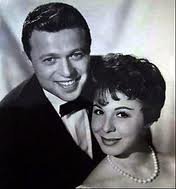
A wedding ring or wedding band is a finger ring that indicates that its wearer is married. It is usually forged from metal, traditionally gold or another precious metal. Rings were used in ancient Rome during marriage.
Depending on the culture, a wedding ring is typically worn on the base of the left ring finger; if the wearer is left-handed, often it will go onto the right hand. The ring finger is widely claimed to be associated with the traditional belief known as vena amoris ("vein of love").
History
The Western traditions of wedding rings can be traced to ancient Rome and Greece, and were first associated with the marital dowry and later with a promise of fidelity. The modern exchange of rings derived from the customs of Europe in the Middle Ages as part of Christendom. It is from these cultures that the choice of the ring finger was chosen, as it was believed that there was a vein from the left ring finger that ran directly to the heart.
Historical styles
Gimmel rings
Gimmel ring with the hoop opened, in the British MuseumDuring the 16th and 17th centuries, European husbands bestowed a gimmel ring upon their wives. Similar to the puzzle ring, the gimmel ring consisted of two interlocking bands. The bride and groom both wore one of these bands after their engagement, and the two bands were reunited during the wedding ceremony. Subsequently, the wife wore the combined ring.
Poesy rings
The poesy ring was a style of ring that was popular during the Renaissance era. It was a band of sterling silver inscribed with a poem or "poesy".
Other styles
Different cultures used many other historical styles of wedding ring. For example, see the image below of the Byzantine ring depicting Christ uniting bride and groom. Also, in the Middle East the puzzle ring was a historical custom: this ring consisted of several pieces that joined into a cohesive band when worn properly. The object of this style of ring was to render it very difficult to put on the finger properly such that, if the wife removed it, her husband would know. The fede ring, being a band consisting of two hands clasped in betrothal, is another historical custom of Europe that ostensibly dates from antiquity.
Limited gold content in the United Kingdom
In 1942 during the Second World War, British wartime restrictions on the manufacture of jewelry resulted in "utility" wedding rings that were limited to a maximum mass of two pennyweights, being slightly heavier than 3 grams, and were forged of 9 carat gold rather than the traditional 22 carat. The Regional Assayer Office hallmarked these rings, which guaranteed their gold content and compliance with the wartime regulations with a special utility mark adjacent to the mark for the year on the inside of the band; the hallmark resembled a capital "U" with the bottom curve absent or two parentheses enclosing a space, i. e., "()".
Double-ring ceremony
The double-ring ceremony describes the exchange of wedding rings by and for both spouses. In several European nations such as the Nordic countries, it is common to exchange plain engagement rings of the same form for both sexes, and typically, an additional, more precious, and bejeweled wedding ring is given to the bride. In the nuptials, the groom's ring becomes a wedding ring also, and can be bestowed anew by the bride as a part of the wedding ceremony. The engagement is commonly a matter of agreement between the two, and the wedding rings are chosen together. Both engagement and wedding rings are worn on the left hand, the bride having both rings together. Occasionally, the groom receives a separate wedding ring. In Germany and Austria, both parties use engagement rings worn on the left hand. At the nuptials, a wedding ring is placed on the right hand, as in several east European nations, including Bulgaria, Poland, and Russia. This can be a new ring for the bride or both, or reusing the engagement rings. Any engagement rings can then remain on the left hand or be transferred to the right hand. In Germany, it has been customary for both the bride and the groom to wear a wedding ring since at least the 1870s and mentions of couples exchanging rings during the wedding ceremony in the Netherlands can be found at least as far back as 1815. In both the United States and Canada, wedding rings were initially only worn by wives, but became customary for both spouses during the 20th century. In Brazil, Mexico, and Spain both sexes also wear engagement rings, and the groom's ring often becomes a wedding ring in the nuptial exchange ceremony. In The Netherlands plain bands can be worn on either hand, left for Catholics and right for Protestants. When engaged, both bride and groom wear what will be the wedding band on the opposite hand and switch hands after the wedding.
If you want to read more, go here: https://en.wikipedia.org/wiki/Wedding_ring
- 4 cups shredded zucchini
- 1 cup biscuit baking mix
- 1 cup shredded mozzarella cheese
- 1/2 cup chopped scallion
- 2 tablespoons chopped parsley
- 1/2 teaspoon salt
- 1/2 teaspoon seasoned salt
- 1 clove garlic, minced
- 1/2 cup vegetable oil
- 4 eggs
- Preheat oven to 350º. Coat a 9- x 13-inch baking dish with cooking spray.
- In a large bowl, combine all ingredients; mix well. Pour into baking dish.
- Bake 25 minutes, or until golden brown. Cut into squares and serve.
1930 – Frank Gifford, American football player and announcer (d. 2015)
National Airborne Day on August 16th honors the military’s airborne divisions of the Armed Forces.
August 16, 1940, marks the date of the first official Army parachute jump at Ft. Benning, Georgia. The successful jump validated the innovative concept of inserting U.S. ground combat forces behind a battle line by parachute. These sky soldiers represent some of the most prestigious and expertly trained forces in the United States Army.
In the U.S. Army currently, two airborne divisions operate. The 82nd Airborne Division out of Ft. Bragg, North Carolina began as an infantry division. During World War I, the 82nd Division activated on 25 August 1917 at Camp Gordon. In 1918, they earned the nickname All American for the composition of their division. Since the soldiers came not only from all across the country, but several were immigrants, too. The 82nd Division represented all of America as few other divisions did at the time.
The second and still active airborne division had a short-lived beginning. During World War I, the 101st Airborne Division organized for a short while on November 2, 1918. However, the war ended shortly after. During World War II, the Screaming Eagles re-activated on August 16, 1942, at Camp Claiborne, Louisiana. They currently make their home at Ft. Campbell, Kentucky.
Both units have served around the world in combat, peacekeeping, and humanitarian missions.
NATIONAL AIRBORNE DAY HISTORY
President George W. Bush proclaimed National Airborne Day on August 14, 2002. On August 3, 2009, the US Senate of the 111th Congress recognized National Airborne Day with Senate Resolution 235.























